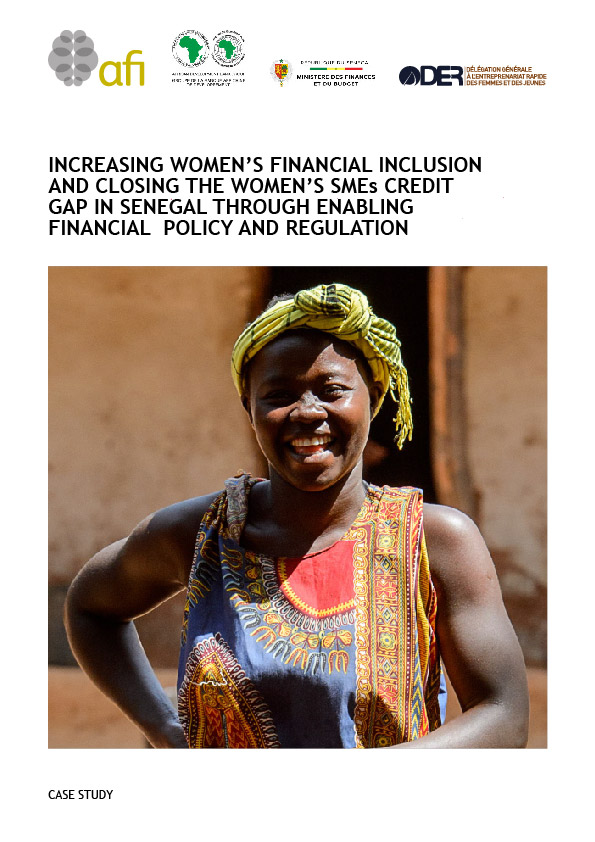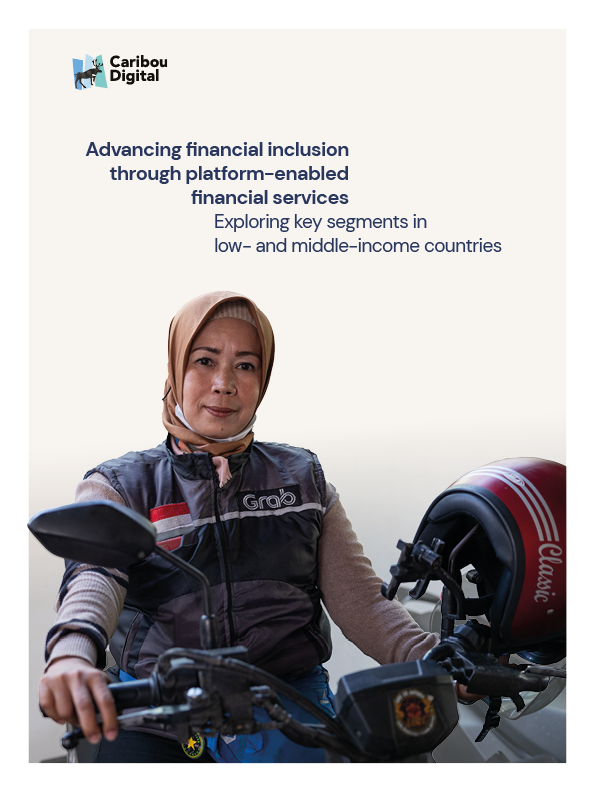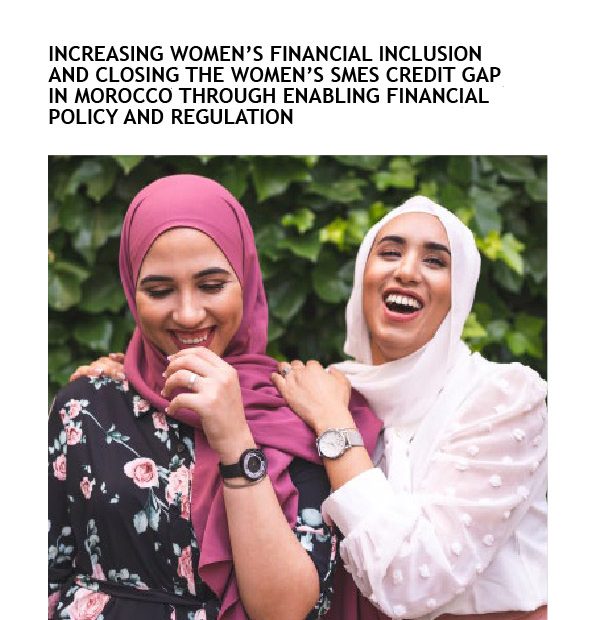Enabling financial inclusion is about providing equal access to financial services. It empowers underserved communities to participate in the economy.
Financial inclusion stands as a gateway to economic empowerment, allowing individuals from all backgrounds to access essential financial services. This concept breaks down the barriers that have historically prevented certain groups from entering the financial ecosystem. By leveraging technology and innovative banking solutions, financial inclusion paves the way for better economic opportunities and stability.
With the rise of digital banking and mobile money solutions, more people now have the tools they need to save, invest, and grow their resources. This inclusive approach not only fosters individual growth but also contributes to the broader economic development by tapping into previously untapped markets. As the world moves towards a more digitized economy, the importance of ensuring everyone can join in is paramount for sustainable growth and social equity.
The Importance Of Financial Inclusion
Financial inclusion stands as a key driver for global development. It ensures that individuals and businesses have access to useful and affordable financial products and services. These services must meet their needs – transactions, payments, savings, credit, and insurance – delivered responsibly and sustainably. Access to a bank account or a mobile money service enables people to store money securely, manage their finances, and build a better future.
Barriers To Accessing Financial Services
Many factors can block access to financial services. Understanding these barriers is the first step to dismantle them.
- Lack of documentation: Without ID, people can’t open bank accounts.
- High costs: Fees can prevent people from using financial services.
- Distance to facilities: Banks or ATMs might be too far for some.
- Lack of trust: People might not trust banks with their money.
- Limited financial literacy: Without knowledge, people can’t use services effectively.
Impact On Economic Growth And Individual Empowerment
Financial inclusion has a powerful impact on economies and individuals.
| Economic Growth | Individual Empowerment |
|---|---|
| Boosts overall market activity | Helps people manage emergencies |
| Increases entrepreneurship | Offers a path to financial independence |
| Creates job opportunities | Supports education and health investments |
With these benefits, financial inclusion proves essential for a thriving society.

Credit: www.instagram.com
Mapping The Unbanked Population
Understanding who the unbanked are and where they live is vital. It’s the first step in enabling financial inclusion. To map the unbanked population, we delve into their demographics and geographical challenges. We explore solutions to bring banking services to their doorsteps.
Demographics Of The Financially Excluded
The unbanked population consists of varied groups. They often share common characteristics:
- Low income: Many earn below the poverty line.
- Limited education: Access to schooling is often scarce.
- Rural residents: A significant number live far from urban centers.
- Women: They are disproportionately represented among the unbanked.
- Migrant workers: They lack stable addresses or documentation.
Geographical Challenges And Solutions
Rural and remote areas present the toughest challenges. Here’s a look at these issues and potential solutions:
| Challenge | Solution |
|---|---|
| Distance from banks | Mobile banking units |
| Lack of infrastructure | Digital platforms |
| Inadequate identification | Biometric systems |
| Low financial literacy | Community education programs |
By understanding these demographics and geographical hurdles, we can tailor financial services. This ensures they reach those most in need.
Technological Innovations Driving Inclusion
Financial inclusion is crucial for economic growth. It gives everyone access to financial services. Technology plays a big part in this. Let’s explore key tech changes helping more people manage their money.
Mobile Banking Revolution
Mobile banking changed how we use money. Now, smartphones act like banks. People send cash, pay bills, and save money using just their phones. This is big for those living far from banks.
- Easy access: Just need a mobile for banking.
- Save time: No more long trips to the bank.
- 24/7 service: Bank anytime, anywhere.
The Role Of Fintech In Democratizing Finance
Fintech means financial technology. It’s all about using tech to make finance services better. Fintech firms are making it easier for everyone to get loans, insurance, and investment help.
| Fintech Service | Benefits |
|---|---|
| Online Loans | Quick to get, less paperwork. |
| Money Management Apps | Track spending, set budgets easily. |
| Investment Platforms | Invest with small amounts of money. |
Policy Frameworks That Foster Inclusion
Strong policy frameworks are the backbone of financial inclusion. They create an environment where everyone can access financial services. This access is key to reducing poverty and boosting prosperity.
Government Initiatives And Regulations
Governments play a crucial role in shaping the financial landscape. They design policies to protect consumers and encourage fair practices. Here are some ways governments foster inclusion:
- Setting up regulatory bodies: These agencies oversee financial institutions and ensure they serve all citizens.
- Introducing inclusive laws: Laws can promote services for the unbanked and underbanked communities.
- Providing subsidies: These help lower the cost of financial services for low-income groups.
- Launching digital platforms: Governments can create digital IDs, making it easier for people to prove their identity and access services.
International Cooperation And Standards
Global efforts are vital for universal financial inclusion. Countries and organizations work together to build inclusive systems. Let’s explore some key actions:
- Sharing best practices: Countries can learn from each other’s successes and challenges.
- Setting international standards: These guidelines help countries shape their own policies.
- Supporting technology: Global partnerships can fund tech solutions that reach remote areas.
Collaboration among nations leads to better financial services for all. It ensures people everywhere have the tools they need to manage their money.
Financial Literacy And Education
Understanding money management is key to financial inclusion. It opens doors to economic opportunities. Financial literacy and education equip people with tools to make informed decisions. This knowledge bridges the gap between the unbanked and financial stability.
Community-based Education Programs
Local initiatives play a crucial role in financial learning. They reach people where they live. These programs tailor content to meet specific community needs. They often use relatable teaching methods, making complex concepts easier to grasp.
- Workshops on budgeting and saving
- Training on credit scores and loans
- Sessions on avoiding financial scams
Community programs encourage peer learning. This support system builds confidence in financial decision-making.
Integrating Financial Education Into School Curricula
Starting early with financial education is essential. Schools have a unique chance to prepare students for the future. Financial topics can be woven into various subjects.
| Grade Level | Financial Concepts |
|---|---|
| Elementary | Money identification, basic transactions |
| Middle School | Budgeting, savings |
| High School | Investing, taxes, loans |
Curricula integration ensures consistent financial learning. It helps students apply knowledge in real-life scenarios.
Microfinance As A Tool For Empowerment
Microfinance stands as a beacon of hope for millions. It opens doors to financial services for those with little to no access to traditional banking. Small loans, savings, and insurance empower individuals to start businesses, create jobs, and improve living conditions. This financial access sparks a ripple effect, boosting local economies and fostering community development.
Success Stories From Around The World
Microfinance transforms lives globally. Let’s dive into some inspiring success stories:
- Bangladesh: A woman turns a small loan into a thriving textile business.
- Kenya: Mobile banking enables a farmer to insure his crops against drought.
- Bolivia: Artisans access credit to market their crafts worldwide.
These success stories highlight the potential for microfinance to change lives.
Challenges And Risks Associated With Microfinance
While microfinance has its victories, it also faces challenges and risks:
| Challenge | Risk |
|---|---|
| High-interest rates | Debt burden for borrowers |
| Limited financial education | Missed opportunities for growth |
| Operational costs | Less profit for microfinance institutions |
Understanding these challenges helps in refining the microfinance model for better outcomes.
Banking The Rural And Remote Areas
Banking the Rural and Remote Areas is a vital step towards financial inclusion. Many people living in these areas have limited access to traditional banking services. This gap can hinder their economic growth. To address this, innovative solutions aim to bring banking closer to these communities.
Alternative Banking Models
Traditional banks often overlook rural areas. They see them as less profitable. To bridge this gap, alternative banking models emerge. These models are flexible. They cater to the unique needs of these communities.
- Mobile Banking: Banks use mobile technology to reach far places. People can do banking from their phones.
- Agent Banking: Local shops act as bank representatives. They offer basic banking services.
- Microfinance Institutions: These institutions provide small loans. They focus on helping local businesses grow.
Partnerships With Local Entities
Partnerships play a key role in banking remote areas. Banks team up with local entities. These partnerships help offer tailored financial services.
| Local Entity Type | Service Provided |
|---|---|
| NGOs | Financial education |
| Cooperatives | Savings and credit services |
| Post Offices | Money transfer services |
Such partnerships ensure that banking services reach every corner. They help people save, invest, and grow their money. This leads to stronger, more resilient local economies.

Credit: www.afi-global.org
Measuring The Impact Of Financial Inclusion
Financial inclusion stands as a pivotal element in the fight against poverty. It opens doors for everyone to join the economic mainstream. To gauge the effectiveness of financial inclusion efforts, we must assess their impact meticulously. Let’s delve into the metrics and societal benefits linked to these initiatives.
Key Performance Indicators
Bold metrics, often called Key Performance Indicators (KPIs), track financial inclusion progress. They shine a light on how well financial services reach those once left out. Look at these KPIs:
- Account Ownership: Number of new bank accounts opened.
- Credit Accessibility: Loans given to previously unbanked individuals.
- Transaction Frequency: How often users engage with their accounts.
- Financial Literacy Levels: Rise in users’ understanding of financial concepts.
- Product Diversity: Range of financial products available to new users.
These KPIs provide clear, quantitative data. They help us see the real change in communities.
Long-term Benefits For Society
Financial inclusion reaps lasting rewards for society. Look at the table below to see these benefits:
| Benefit | Description |
|---|---|
| Economic Growth | More people banked means more money moving in the economy. |
| Reduced Inequality | Equal financial access helps close the wealth gap. |
| Empowerment | People take control of their money and future. |
| Resilience | Communities can better withstand economic shocks. |
These benefits show a brighter future for all. They lead to a more balanced and resilient society. Financial inclusion is not just a number game. It’s about real people building better lives.
The Future Of Financial Inclusion
As we gaze into the horizon, the future of financial inclusion holds promise for empowering lives. It shapes a world where everyone can access financial services. This vision hinges on innovative trends and a commitment to growth that benefits all.
Predictions And Trends
Digital technology will lead the way in financial inclusion. Here are key forecasts:
- Mobile Money: Phones will be primary banking tools.
- Blockchain: This tech will make transactions secure and quick.
- AI and Big Data: They will offer personalized financial services.
These trends will make finance easy for people everywhere.
Ensuring Sustainable And Equitable Growth
To make sure growth helps everyone, these steps are vital:
- Education: Teach people about money management.
- Regulations: Create rules that protect users.
- Partnerships: Unite banks, tech, and communities for better services.
With these actions, financial growth will reach every corner of society.

Credit: www.cariboudigital.net
Case Studies: Successes And Lessons Learned
Exploring how different countries have embraced financial inclusion provides valuable insights. These case studies highlight the strategies that worked, the challenges faced, and the lessons learned. They show that with the right approach, financial inclusion can become a reality for millions.
Country-specific Analyses
Diverse nations have taken unique paths to financial inclusion. Some have achieved remarkable success, while others continue to learn from their experiences. By examining country-specific cases, we can understand the factors contributing to their outcomes.
| Country | Strategy | Outcome |
|---|---|---|
| Kenya | Mobile money services | High financial inclusion rates |
| India | Biometric identification | Bank accounts for millions |
| Brazil | Social welfare programs | Reduced inequality |
In Kenya, mobile banking like M-Pesa revolutionized access to financial services. India’s Aadhaar system linked biometric IDs to bank accounts, simplifying banking for many. Brazil used social programs to encourage bank account usage among the poor.
Adapting Strategies To Different Contexts
No single strategy fits all. Each country must adapt based on its own economic, social, and technological landscape. The key is in customizing approaches to meet local needs and overcoming barriers unique to each environment.
- Technology: Use what works locally, like mobile networks or blockchain.
- Regulation: Create laws that protect users but also promote innovation.
- Education: Teach people to use financial services safely and effectively.
For instance, in regions with limited internet access, mobile-based solutions prove effective. Where literacy is an issue, visual interfaces and voice commands in local languages help. Clear regulations build trust and encourage people to use formal financial services.
Frequently Asked Questions
What Does It Mean To Promote Financial Inclusion?
Promoting financial inclusion involves increasing access to financial services for underserved communities, enabling economic participation and empowerment.
What Does It Mean To Foster Financial Inclusion?
Fostering financial inclusion involves expanding access to financial services to those currently underserved or excluded, such as low-income individuals or small businesses. It aims to provide affordable, equitable financial resources for all.
How Do You Create Financial Inclusion?
Financial inclusion involves offering affordable financial services to all individuals, especially the underbanked. Ensure easy access to banking, credit, and investment products. Tailor financial education to empower users with money management skills. Leverage technology like mobile banking to reach remote areas.
Collaborate with local organizations to understand community needs.
What Is The Financial Inclusion Strategy?
The financial inclusion strategy aims to ensure individuals and businesses have access to useful and affordable financial products and services, including banking, loans, and insurance.
Conclusion
Embracing financial inclusion is essential for equitable growth. It empowers individuals, supports economic stability, and opens doors to opportunities. As we advance, harnessing technology and innovative strategies remains key. Let’s commit to a future where financial tools are accessible to all, fostering a world of shared prosperity.
